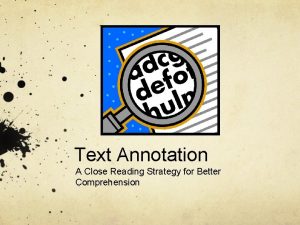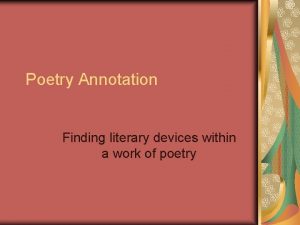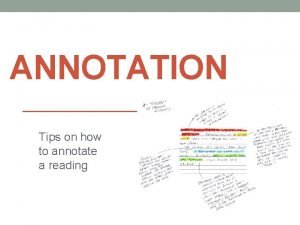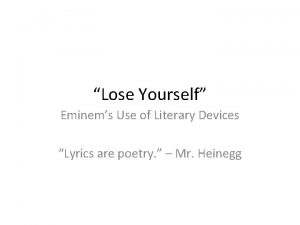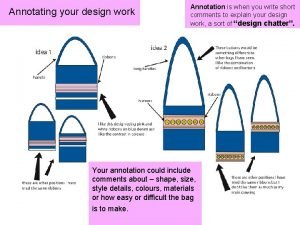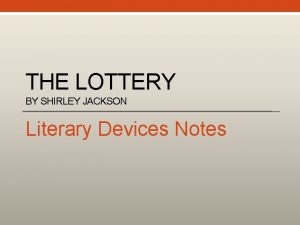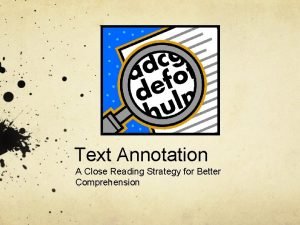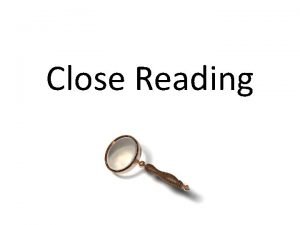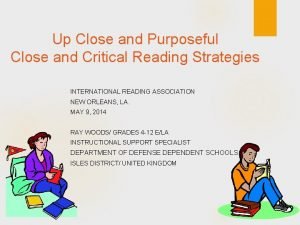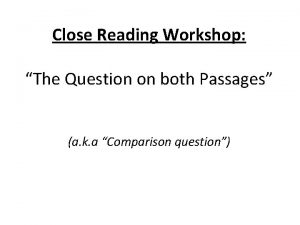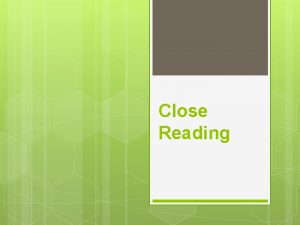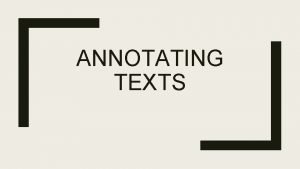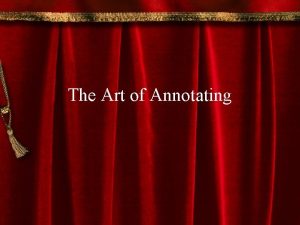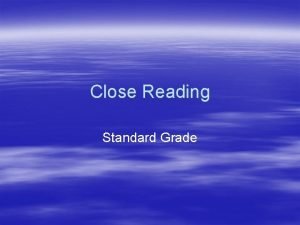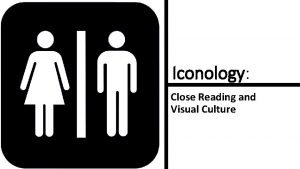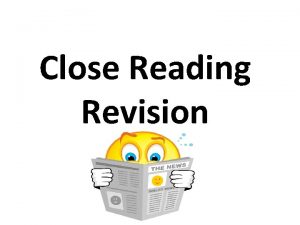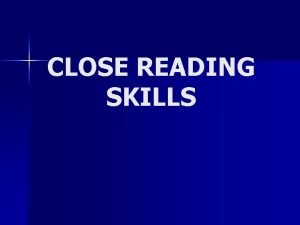ANNOTATING CLOSE READING PURPOSE OF ANNOTATING WHAT TO











- Slides: 11

ANNOTATING & CLOSE READING

PURPOSE OF ANNOTATING & WHAT TO LOOK FOR • Adding notes to a text while reading, in order to provide explanation or comments for better understanding and overview • What to look for: • Newspaper- where is the article coming from? Does it have an effect on the articles? • Section- how is this article going to effect the reader? Ex: lifestyle, business, etc • Title- what is the title going to tell you about the article/ text?

WHAT TO LOOK FOR CONT. • Headline- specifically for newspapers/ magazine articles, briefly describing what the article is going to cover. • Grabs your attention! READ ME • Subheading- deeper explanation providing specifics on the article, tying the headline and the article together • Now that you are interested, here are the specifics…

WHAT TO LOOK FOR CONT. • Type- what kind of text is it? Essay? Novel? Article? • What does the type of text tell us about the information? • Article: inform us about a specific situation/ issue/ what is going on in the area • Essay: explaining an issue/ situation, and providing a detailed and organized argument on how to resolve the issue OR simply sharing a story

WHAT TO LOOK FOR CONT. • Who are the main people involved? • Someone famous? • An animal? • Someone in the area? • Most articles include a quote or story from a person effected by the situation in the article offers a personal touch for readers to connect with • Ex: for this newspaper, the article might include a story from someone who attended the basketball game

WHAT TO LOOK FOR CONT. • When was this published? Whether it is a novel, article, or essay, the date matters! • What is going on? Based on the headline and the subheading, what is the text going to be telling us? INFORM!

• Is this a recent article? • Why would someone read this article?

WHAT TO LOOK FOR CONT. • Summarizing paragraphs in the margins • What is the first paragraph telling me? Why is it so important? Does it set up the rest of the text? What do I know based on just the opening paragraph? • Why is this useful?

WHAT TO LOOK FOR CONT. • WORDS!- what words are confusing to you? Any terms that you have not seen before? MAKE A NOTE! • Underline and look it up later!

TONE VS MOOD • Tone- how the author feels/ the emotions and feelings occurring in the text • Mood- how you as the reader perceive the text and how it makes you feel

CODE IT • During your annotations, create a code that makes sense to you and helps you CLOSE read QUICKLY and EFFECTIVELY. • Examples: 1. Main idea/ thesis* = underlined with a * noted in the margin 2. Supporting details and background information = squiggly line 3. Unclear words/ vocabulary/ words to know = circle 4. Interesting/ Shocking idea* = note in the margin, boxed around the thought 5. Questions? = question mark by the thought? Arrows in the margins with ideas and possibilitie • Highlighters are fun! Color-code your thoughts and ideas if it helps
 What is text annotation
What is text annotation Annotating a poem examples
Annotating a poem examples Tips for annotating
Tips for annotating Figurative language in lose yourself by eminem
Figurative language in lose yourself by eminem Annotating design ideas
Annotating design ideas Literary devices in the lottery
Literary devices in the lottery Close reading symbols
Close reading symbols While reading activities
While reading activities Close reading protocols
Close reading protocols Close and critical reading
Close and critical reading The author of both passages agree that
The author of both passages agree that Close reading a poem
Close reading a poem
